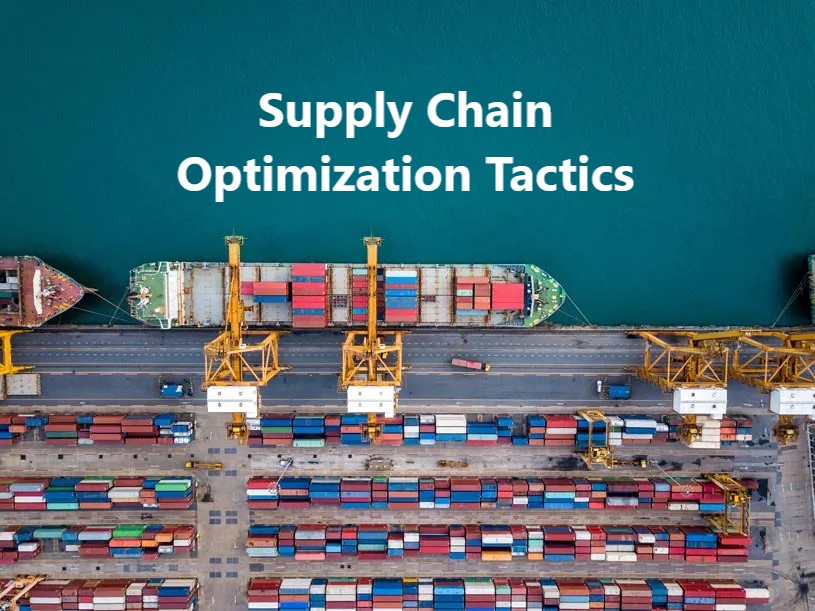
These tactics not only address immediate operational needs but also prepare your business for long-term growth. As you explore ways to enhance your supply chain, consider how each tactic contributes to overall performance and customer value. Implementing the right strategies can transform your supply chain into a key driver of success.
Leveraging Data Analytics for Demand Forecasting
Leveraging data analytics for demand forecasting is one of the most effective supply chain optimization tactics available. By analyzing past trends and market data, businesses can better predict future demand. This approach reduces the guesswork, enabling more accurate inventory planning and resource allocation. Advanced analytics also account for seasonality, market shifts, and customer preferences, giving you a clearer picture of future demand patterns.
With accurate demand forecasting, you can minimize both stockouts and overstock. Stockouts lead to missed sales and frustrated customers, while overstock ties up capital and storage space. Data-driven forecasting allows you to maintain optimal stock levels, ensuring products are available when needed without excessive surplus. This balance helps improve cash flow, reduces waste, and keeps inventory costs under control.
Implementing advanced analytics into your demand forecasting also supports faster response times. When you can anticipate changes in demand early, you can adjust your orders and supply chain processes accordingly. This agility keeps your supply chain responsive and aligned with current market demands. By investing in data analytics, you position your business to make proactive, informed decisions that drive efficiency and customer satisfaction.
Implementing Inventory Management Best Practices
Implementing inventory management best practices is essential for maintaining optimal stock levels and reducing costs. Effective inventory management ensures you have the right products available without overcommitting resources to storage. One popular technique is just-in-time (JIT) inventory, which involves ordering goods only as they are needed for production or sales. JIT helps minimize holding costs, allowing you to reduce inventory levels and free up working capital.
Another important method is safety stock management, which involves keeping a buffer of extra stock on hand to avoid stockouts. Safety stock acts as a cushion against unexpected demand spikes or delays in the supply chain. This approach improves service levels by ensuring product availability even when there are unforeseen issues. By calculating safety stock levels based on historical demand and lead times, you can find a balance that minimizes excess inventory while still meeting customer needs.
Integrating these techniques into your supply chain optimization tactics can lead to significant improvements. When you align inventory levels with actual demand, you reduce waste and avoid excess carrying costs. Using methods like JIT and safety stock helps streamline operations, improve cash flow, and enhance overall efficiency. With these strategies in place, your inventory management becomes more responsive and adaptable to market changes.
Enhancing Supplier Relationships and Collaboration
Building strong, transparent relationships with suppliers is essential for effective supply chain optimization tactics. Open communication and trust with your suppliers create a foundation for smooth operations. Sharing your goals, expectations, and forecasts with suppliers enables them to understand your needs and prepare accordingly. Regular meetings, progress updates, and clear agreements help set the stage for collaboration, ensuring both parties work toward mutual success.
Collaboration with suppliers also brings added flexibility to your supply chain. When suppliers are well-informed, they can adjust their production schedules or resources more effectively to meet your demands. This flexibility reduces the likelihood of delays, allowing you to maintain consistent inventory levels and meet customer expectations. Additionally, strong supplier relationships enable quicker response times to sudden demand changes, giving your business an edge in adaptability.
Reduced lead times are another benefit of close supplier partnerships. When you work with suppliers who understand your business’s rhythm, they can streamline production and shipping processes to get products to you faster. These efficiencies help prevent stockouts and keep your operations running smoothly. By fostering collaborative and transparent supplier relationships, you can enhance supply chain performance, reduce costs, and build a more resilient operation that adapts to market demands effectively.
Using Technology for Real-Time Tracking and Visibility
Using technology for real-time tracking and visibility is essential in modern supply chain optimization tactics. Tools like IoT, RFID, and GPS allow businesses to monitor goods at every stage of transit. IoT devices can send data continuously, helping you keep track of inventory conditions and location. RFID tags provide instant updates on goods moving in and out of warehouses, making it easier to manage inventory. GPS tracking enables you to follow shipments in real time, ensuring timely deliveries and offering transparency to both you and your customers.
Real-time data plays a crucial role in improving supply chain responsiveness. With immediate access to shipment statuses and inventory levels, you can make adjustments on the fly. For example, if a delay occurs, real-time tracking allows you to reroute shipments or inform customers proactively. This level of visibility helps reduce uncertainties, making your supply chain more agile and responsive to changes in demand or unexpected disruptions.
Incorporating these technologies into your supply chain can also lead to better decision-making and lower costs. Real-time data offers insights that enable you to identify inefficiencies and address them promptly. Additionally, with full visibility into your logistics, you can enhance customer satisfaction by providing accurate delivery timelines. Leveraging IoT, RFID, and GPS for tracking not only improves operations but also strengthens your ability to adapt to market demands, keeping your supply chain efficient and competitive.
Reducing Costs Through Process Automation
Reducing costs through process automation is a core strategy in effective supply chain optimization tactics. By automating repetitive tasks, you increase efficiency and reduce human errors, which can be costly. Tasks that often require manual effort, such as data entry, inventory tracking, and invoice processing, can be completed quickly and accurately with automation. This not only saves time but also allows employees to focus on higher-value work, boosting overall productivity.
In warehousing, automation can streamline operations by using robots or automated picking systems to handle stock. These tools can speed up order fulfillment and minimize mistakes, ensuring products are accurately packed and shipped. In order processing, automation helps by automatically verifying and validating orders, reducing the chances of error and freeing up staff for more strategic tasks. This process results in faster, more reliable service, improving customer satisfaction.
Automation is also beneficial in transportation management. Automated route planning tools optimize delivery schedules and reduce fuel costs by identifying the most efficient routes. This can significantly lower transportation expenses, especially for companies with large delivery networks. Incorporating automation in these areas leads to smoother operations, improved accuracy, and cost savings across the supply chain. By focusing on automation, you enhance efficiency and strengthen your supply chain’s resilience.
Sustainability and Green Supply Chain Practices
Sustainability and green supply chain practices are becoming central to modern supply chain optimization tactics. By adopting eco-friendly methods, you can reduce environmental impact and enhance operational efficiency. One effective tactic is to optimize transportation routes, minimizing fuel consumption and emissions. This approach not only lowers costs but also contributes to a smaller carbon footprint. Additionally, using recycled or sustainable packaging materials can reduce waste, which appeals to environmentally conscious consumers.
Implementing energy-efficient practices in warehousing is another way to embrace sustainability. For example, installing LED lighting or using solar energy can significantly cut energy costs. Reducing water usage and recycling materials within your facilities also helps conserve resources. These green practices not only support environmental goals but also improve long-term efficiency. They position your company as a responsible brand committed to sustainable development, which can strengthen customer loyalty.
The benefits of sustainable supply chain practices extend beyond environmental impact. These strategies often lead to long-term cost savings and a better brand reputation. Consumers increasingly prefer brands that prioritize sustainability, so integrating these practices can attract more customers. Moreover, regulatory trends are increasingly favoring sustainable operations, helping you avoid potential penalties. By investing in sustainability, you create a resilient supply chain that adapts to both market demands and environmental needs, fostering growth and trust in your brand.
Conclusion
Implementing effective supply chain optimization tactics can drive efficiency, reduce costs, and support long-term growth for your business. By focusing on strategies like data-driven forecasting, automation, and sustainable practices, you can enhance responsiveness and meet customer demands with precision. Building strong supplier relationships and leveraging technology for real-time tracking further strengthens your supply chain’s resilience.
These optimization tactics not only improve day-to-day operations but also add value to your brand by meeting modern customer expectations. Sustainable practices, in particular, contribute to both cost savings and a positive reputation, showing your commitment to environmental responsibility. As you refine your supply chain, these strategies will help you build a competitive edge and achieve consistent, dependable growth.


